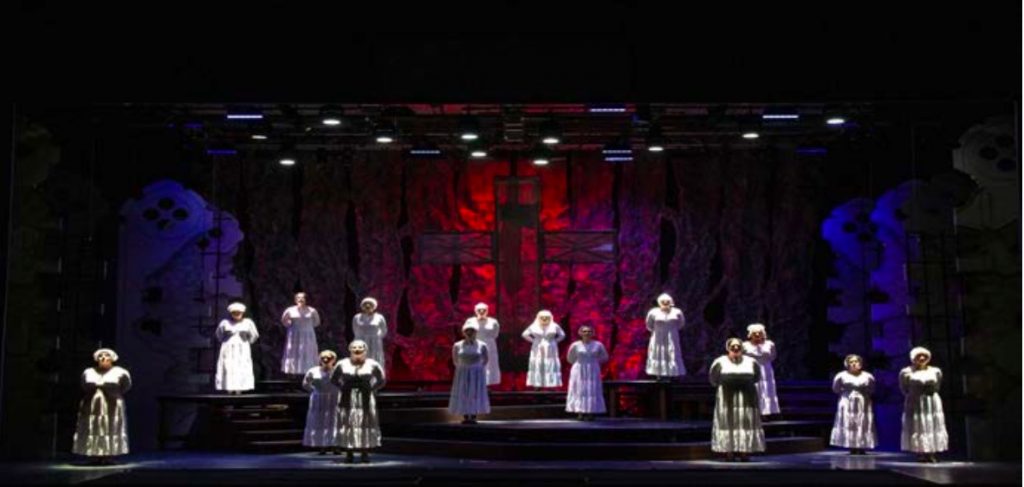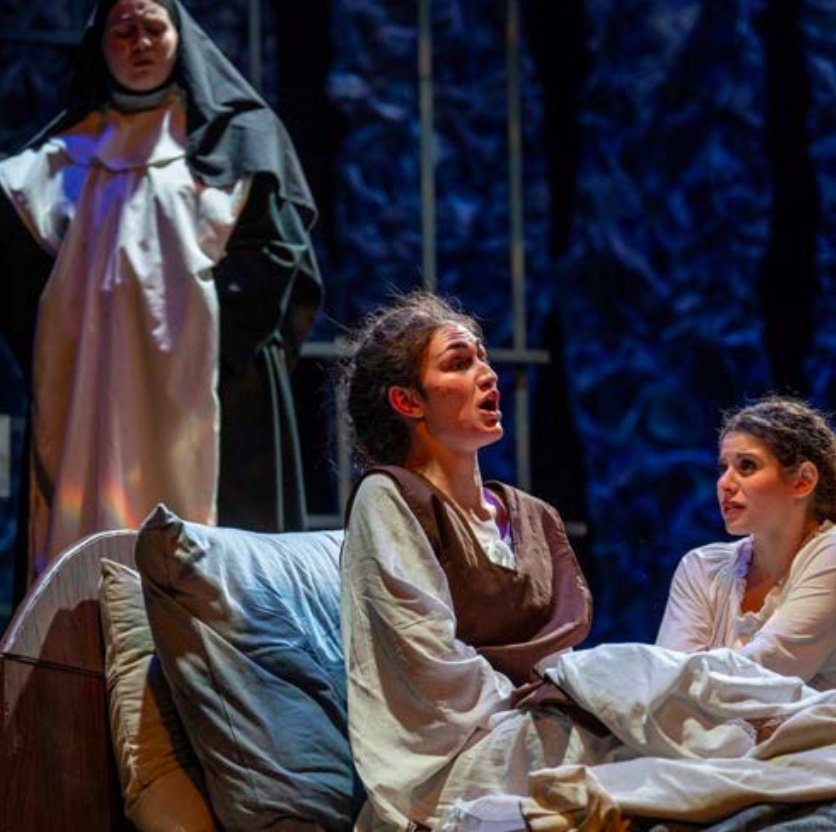by Daniel Hathaway

A theater piece based on such a true story — the mass execution of a convent of Carmelite Nuns at Compiègne during the Reign of Terror in the French Revolution — may seem an odd choice for a student production, but in practice, the piece is a gift for opera departments like CIM’s that are long on female voices.
The dark and serious subject matter may also seem an odd choice for the composer, whose musical style frequently leans toward the popular and theatrical (think of the ending of the “Laudamus te” from his Gloria, where the music seems about to morph into a Cha-Cha!).
In fact, Poulenc’s 1957 Dialogues is replete with serious and lyrical music, both liturgical and dramatic. The score concludes with one of the most affecting scenes in all of musical theater as the Sisters are sent one by one to perish under the blade of the guillotine as the chorus of those who remain sing the composer’s Salve Regina as an inexorable funeral dirge.
The story has been told in different formats since its first appearance as a novella by Gertrud von Le Fort (who wrote herself into the narrative as the mostly fictional character of Blanche de la Force), to Poulenc’s own opera libretto, and an unproduced film script by Georges Bernanos that was turned into a stage play.
Interestingly, Poulenc noted the sources of his inspiration on the dedication page of the score:
in memory
of
MY MOTHER
who revealed the music to me
of
CLAUDE DEBUSSY,
who gave me the taste to write about it,
of
CLAUDIO MONTEVERDI
GIUSEPPE VERDI
MODESTE MOUSSORGSKI
who served as my models here.
The resulting work resembles less the dramatic format and content of an opera as it does a set of twelve tableaux separated by interludes. There is little action until the third act, when the structure of French society — both religious and secular — begins to tragically unravel. That all happens on a unit set designed and lit by Dave Brooks that serves with minimal accessorization as the convent’s chapel, chapter room, sacristy, and library, and finally as a prison and the Place de la Revolution.

In the pit, Harry Davidson drew playing of high quality from the CIM orchestra — and sometimes of high volume as well. Much of the second act on Sunday was overbalanced in favor of the instruments, except when the sisters sang as a choir well-prepared by John Simmons.
As the story moves toward its conclusion, the convent is taken over by the revolutionaries and the sisters go into hiding wearing secular clothing (effective costuming by Inda Blatch-Gelb) until they’re sought out by the authorities, imprisoned, and served death sentences for refusing to relinquish their religious vocations.
Poulenc has indicated with tiny downward arrows in the score when the blade of the guillotine should fall — with frightening regularity, but randomly enough to keep the audience on edge. Hudson elected to stage that scene in full sight but symbolically. Each sister collapsed in a pool of red light when her time came — a totally effective piece of theater.
Published on ClevelandClassical.com March 22, 2023.
Click here for a printable copy of this article





